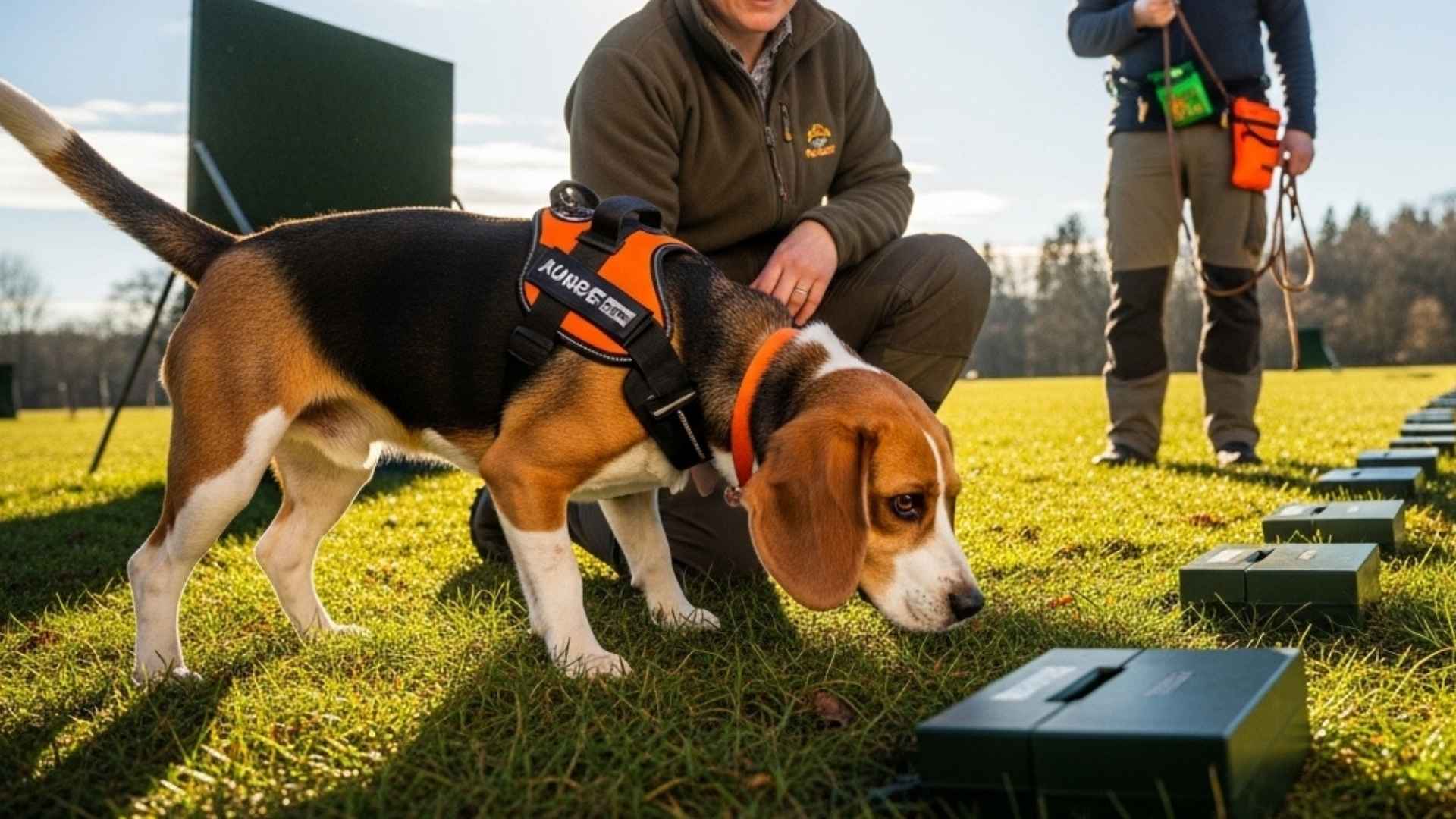Did you know a dog’s nose can be up to 100,000 times more sensitive than a human’s?
That incredible superpower makes certain breeds absolute stars when it comes to scent work — a field where dogs track odors, detect substances, and even locate missing people. But not every pup is born for the job. Some breeds have been fine-tuned over generations to excel in sniffing out the faintest traces of a scent trail.
Whether you’re building a professional detection team or just fascinated by canine capabilities, choosing the right breed can make all the difference. Scent tracking work is as much about instinct as it is about teamwork.
Let’s explore which breeds truly shine when the nose leads the way.
Best Dog Breeds for Scent Work Teams
1. German Shepherd
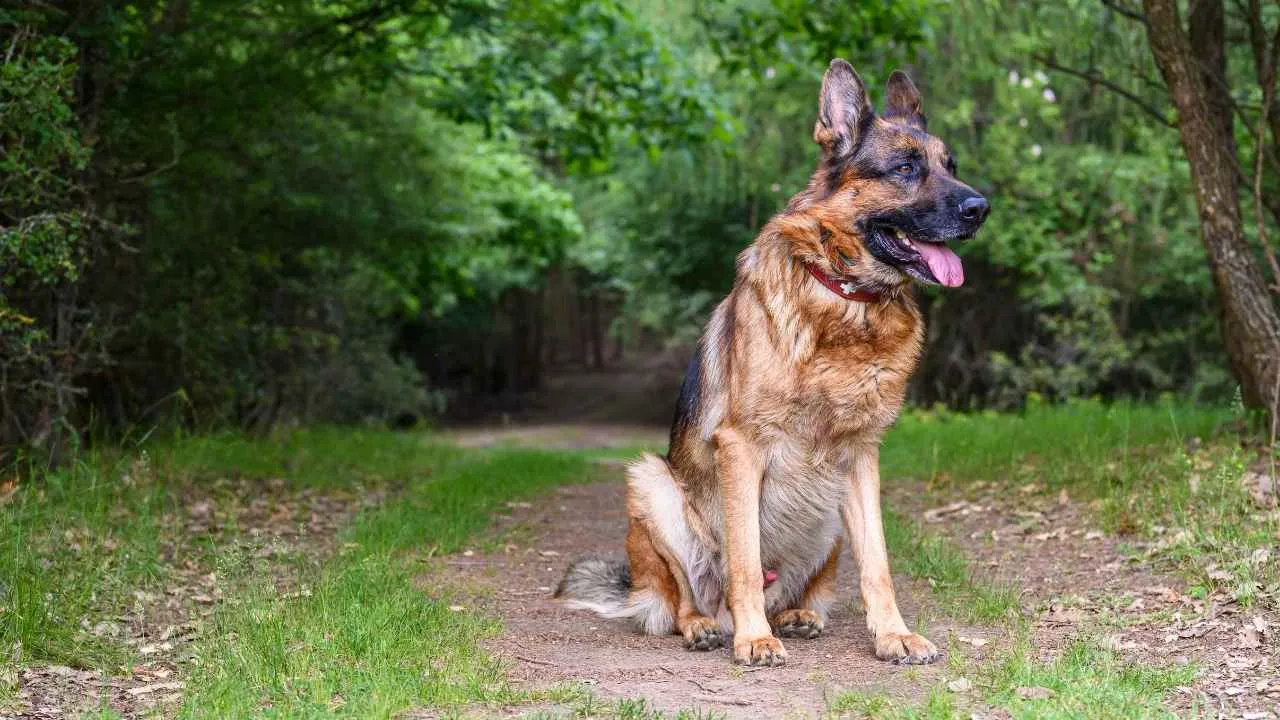
According to the AKC, the German Shepherd is one of the most intelligent and versatile working breeds, originally bred in Germany for herding and protection.
Known for loyalty and confidence, this breed is highly trainable and thrives when given purposeful tasks. Their balanced temperament and strong sense of responsibility make them a top choice for scent work, where focus and discipline are essential.
Their olfactory system is exceptionally advanced, allowing them to detect even the faintest scent trails. German Shepherds are frequently used as police, military, and search and rescue dogs due to their ability to track missing persons or detect substances with precision.
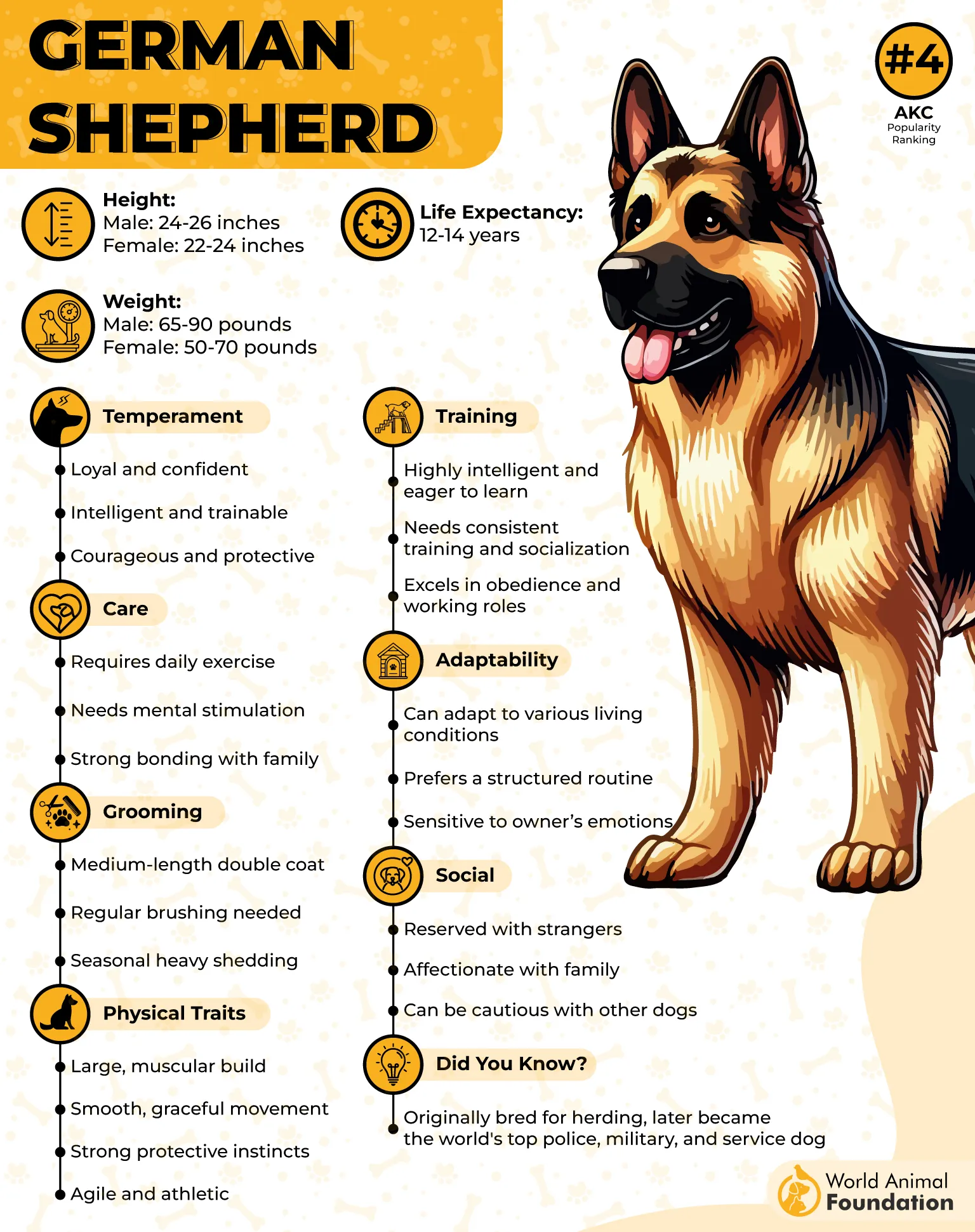
Handlers value the breed’s ability to learn complex scent cues quickly and retain them through consistent reinforcement. A combination of physical stamina, sharp intelligence, and eagerness to please helps them perform efficiently in prolonged scent tasks.
Although capable and disciplined, the German Shepherd requires a clear structure and mental stimulation to perform at its best. When under-challenged, the breed can become restless, so regular scent drills and mental exercises help keep their skills sharp. Engaging them in detection or tracking sessions also supports emotional well-being and confidence.
This breed’s adaptability allows it to perform equally well in field environments, urban search zones, or controlled scent labs. The combination of athleticism, work ethic, and keen smell ensures a German Shepherd remains one of the most dependable dogs for scent detection and tracking.
Fun Fact
German Shepherds can identify distinct human scents across several miles and are frequently used in avalanche rescue and disaster response operations.
2. Beagle
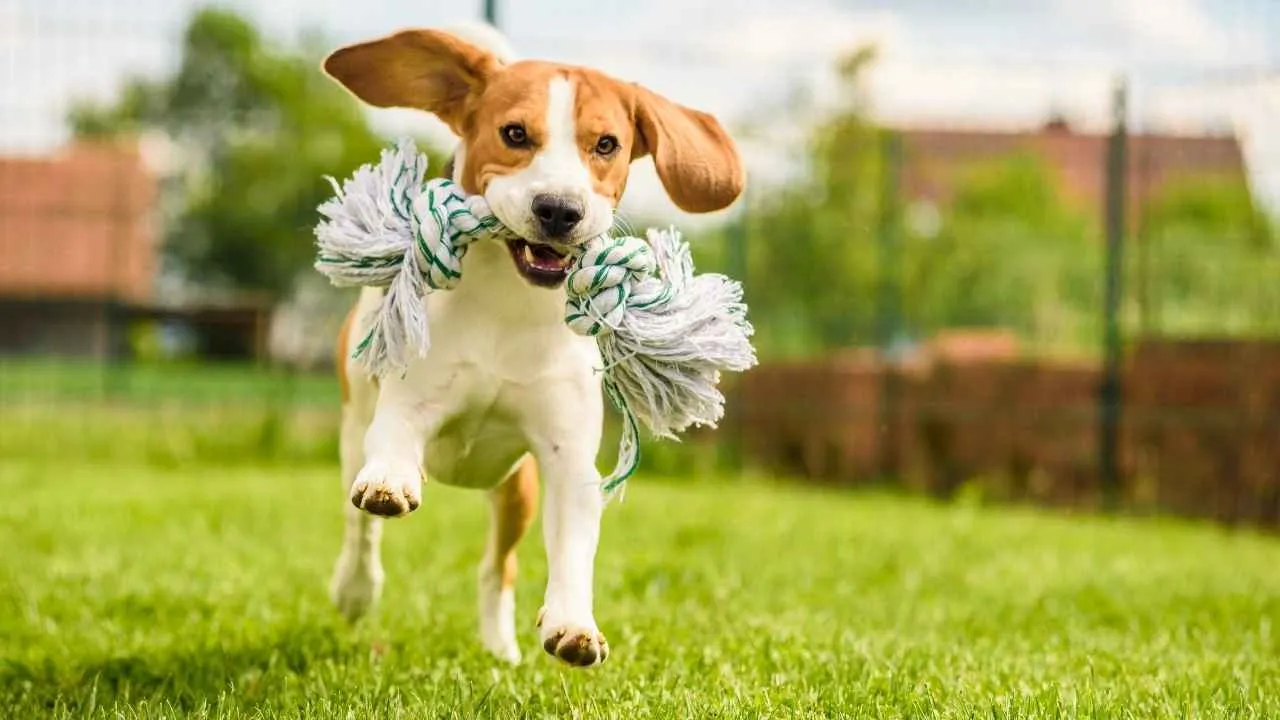
The Beagle is a small yet powerful scent hound known for its persistence and enthusiasm in tracking. Originally bred for rabbit and hare hunting, it excels in following ground scents for extended periods without losing concentration.
Its compact size and cheerful disposition make it approachable, while its keen nose puts it among the top dogs in olfactory ability.
Physically, the Beagle’s long ears and low muzzle help funnel scents toward its nose, amplifying its detection efficiency.
With roughly 220 million scent receptors, it can identify odors too faint for most other breeds. These traits have made the Beagle a frequent choice in detection roles, from customs inspection to agricultural protection.
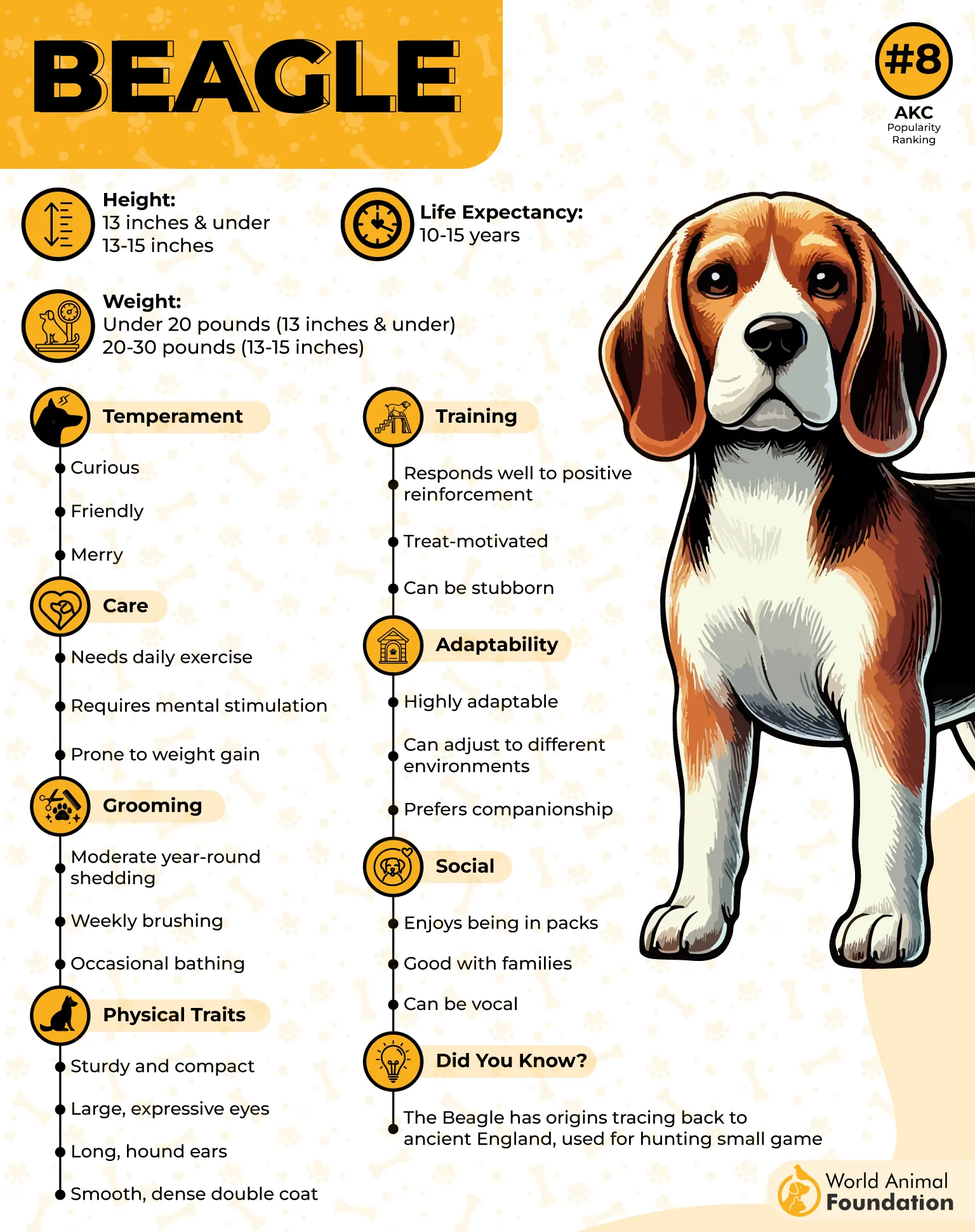
Because of their friendly, adaptable nature, Beagles transition easily between work and companionship. They thrive in team settings and enjoy collaboration during scent-based games or challenges. This cooperative mindset makes them both effective and enjoyable partners for handlers.
However, their independent streak means structured training is important to prevent distraction, as noted by PetMD. Their natural curiosity and determination can sometimes override commands if they catch an irresistible scent. Consistency, patience, and reward-based methods keep their motivation focused on assigned scent tasks.
Beagles perform best when scent work feels like play—varied activities, search puzzles, and exploration keep them mentally satisfied. Their balance of tenacity, intelligence, and joy makes them an ideal breed for scent teams that value precision with personality.
Fun Fact
Beagles are the preferred breed for airport agriculture and contraband detection units because their approachable size and friendly demeanor make them less intimidating to travelers.
3. Bloodhound
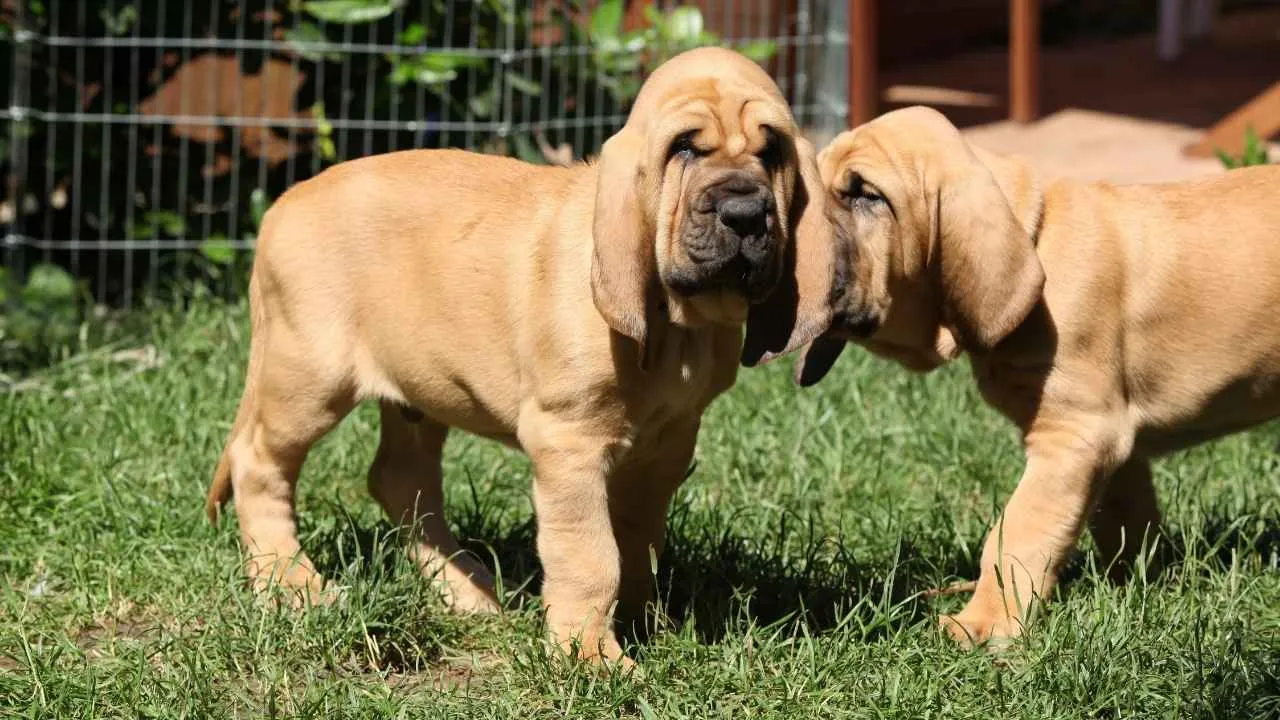
The Bloodhound is the undisputed master of scent tracking, renowned for its unmatched ability to follow trails over great distances and time.
With an ancestry stretching back centuries, it has been prized for its precision in human scent detection. Its large nose contains about 230 million scent receptors—more than nearly any other breed.
This powerful sense of smell allows Bloodhounds to detect scent trails that are days old, even when crossed by other odors.
Their wrinkled skin and long, drooping ears capture and hold scent particles close to the nose for maximum effectiveness. These traits make the breed a natural fit for search-and-rescue and forensic tracking work.
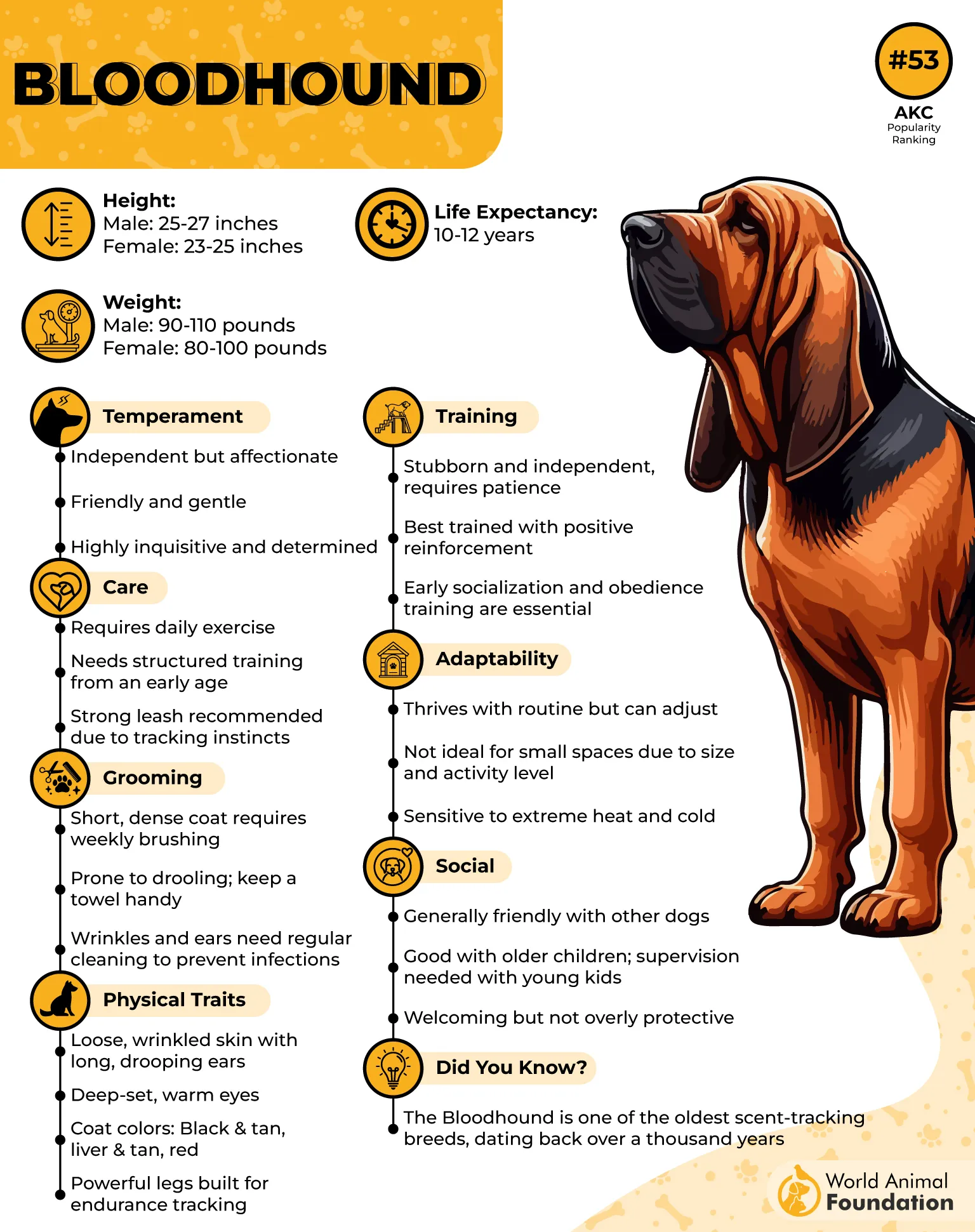
As per Britannica, Bloodhounds are affectionate and patient companions. Their gentle nature contrasts with their professional intensity, and they bond deeply with handlers who appreciate their dedication. Regular exercise and scent work sessions help channel their energy productively.
Because their tracking instinct is so strong, handlers must maintain control and clear communication during searches. Once focused on a scent, Bloodhounds may follow it relentlessly, ignoring distractions. Structured training and teamwork help ensure their efforts remain goal-oriented and safe.
For scent work teams that require unwavering focus and unparalleled smell accuracy, the Bloodhound remains the gold standard. Their endurance and determination make them indispensable in both professional and volunteer detection teams worldwide.
Fun Fact
Bloodhound evidence has been accepted in several court cases because of the breed’s proven accuracy in scent identification and trail tracking.
4. Black and Tan Coonhound
The Black and Tan Coonhound is a distinctly American scent hound bred for tracking raccoons and other game through dense forests and rugged terrain.
Its sense of smell is so refined that it can follow cold trails even after weather changes. The breed’s stamina and determination allow it to track tirelessly across long distances and challenging conditions.
This dog’s sleek black-and-tan coat and long ears serve a functional as well as aesthetic purpose. The ears stir up ground scents, while the smooth coat resists brush and debris during hunts. These physical traits, combined with a deep, melodious bay, make the breed both efficient and iconic in tracking work.
Temperamentally, Black and Tan Coonhounds are sociable and loyal, balancing a strong work ethic with a calm personality, as stated by WebMD.
They are happiest when given tasks that tap into their natural instincts, whether in competitive scent work, field trials, or recreational tracking. Their even nature also makes them reliable companions at home.
While enthusiastic and intelligent, they can be independent thinkers. Consistent, positive training and early socialization ensure they stay focused and responsive during scent exercises. This discipline keeps its impressive tracking skills refined and reliable.
For scent work teams that need endurance, focus, and a steady temperament, the Black and Tan Coonhound is an outstanding option. Their adaptability allows them to excel in professional tracking, search operations, or organized scent sport events.
Fun Fact
Although built for rigorous outdoor tracking, Black and Tan Coonhounds are known to transform into gentle couch companions the moment they return home from a trail.
5. Basset Hound
The Basset Hound is a breed famous for its droopy ears, soulful eyes, and phenomenal scenting ability. Originally developed in France for tracking small game like rabbits, this breed’s sense of smell ranks among the top three of all dogs.
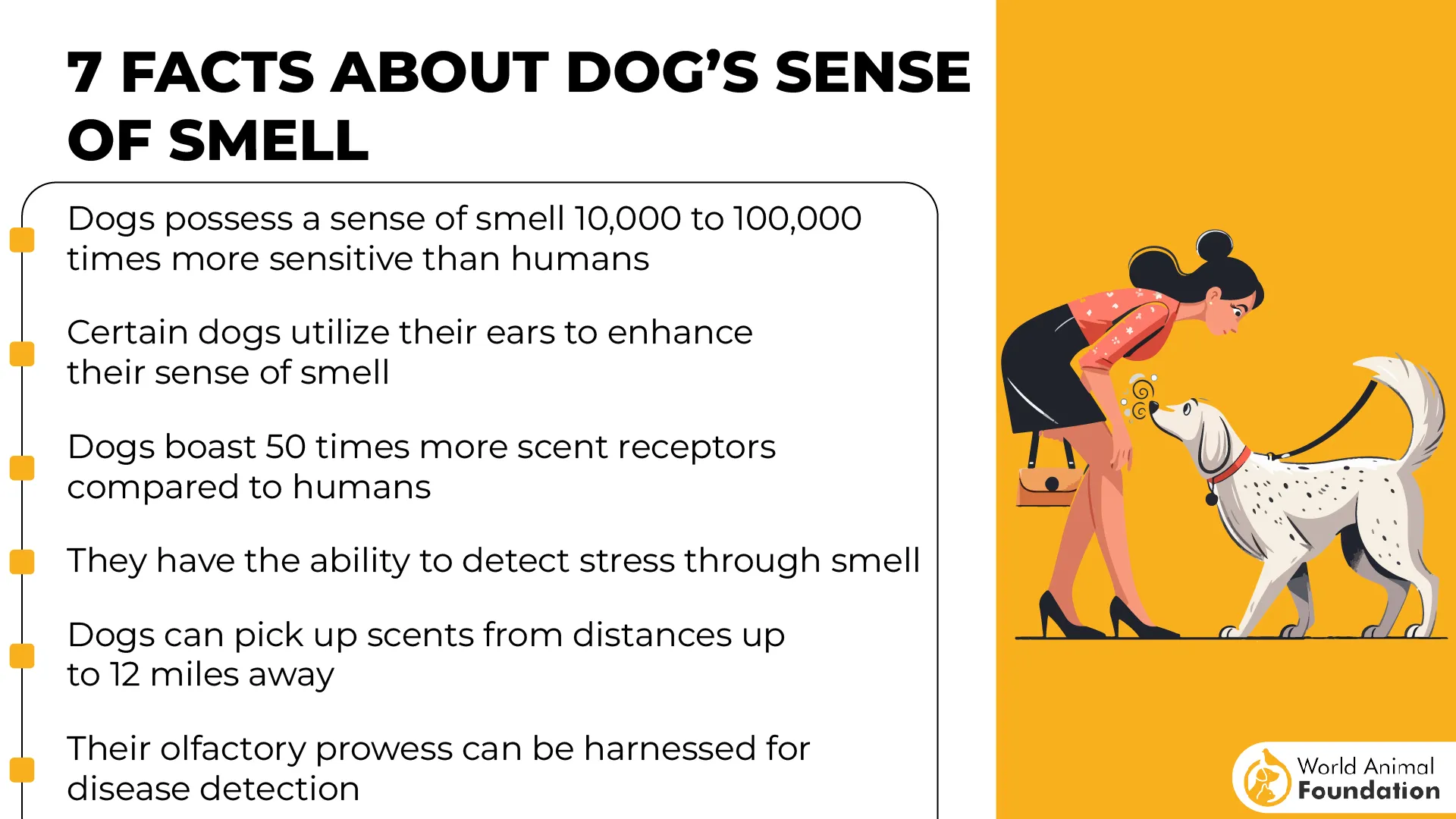
Its low stature allows it to keep its nose close to the ground, maintaining consistent contact with scent trails even over long distances.
With around 220 million scent receptors, the Basset Hound’s nose is second only to the Bloodhound’s. The long ears act like brushes that sweep scent particles upward toward the nose, while loose facial skin traps odors for deeper analysis. These features give them an almost scientific advantage when tracking.
While not built for speed, the Basset Hound excels in endurance. Its slow, methodical movement helps it maintain focus on faint trails that faster breeds might overlook. This precision makes it particularly useful for sustained scent-work or tracking exercises that require patience.
The breed’s gentle, affectionate temperament makes it easy to handle, and it often thrives in cooperative work environments.
However, its independent streak means handlers must use positive reinforcement and patience to sustain engagement during scent training. Structured play and rewards keep this hound motivated and confident.
For scent work teams, the Basset Hound’s unmatched concentration and consistency make it an ideal choice for detailed tracking. Its combination of keen scenting power, calm nature, and endurance ensures accurate, dependable results on every trail.
Fun Fact
The Basset Hound’s ears can measure up to a foot long and serve a practical purpose—helping stir up scents from the ground while tracking.
6. Treeing Walker Coonhound
The Treeing Walker Coonhound is a powerful and agile scent hound often called the “People’s Choice” among hunters and trackers.
Originating in the United States, it descends from English Foxhounds and was bred to pursue raccoons and other game over vast terrains. Its keen nose and relentless energy make it one of the most effective scent hounds for fast, mobile tracking.
In scent work, this breed’s olfactory capabilities are complemented by a sharp mind and intense drive. Its ability to detect and distinguish scents over long distances is exceptional, allowing it to trail even faint odors under challenging conditions.
This combination of mental alertness and sensory precision makes it a valuable partner for competitive scent teams and field operations.
Physically, the Treeing Walker Coonhound’s strong build and long legs give it endurance and speed—ideal traits for covering large search areas quickly. Its distinctive bay, a loud and rhythmic bark, alerts handlers when it has located a scent source or treed quarry.
While naturally confident and determined, this breed needs consistent direction to avoid over-independence. Early socialization and structured scent games help balance its freedom-loving nature with responsiveness to commands. Reward-based training keeps it motivated and focused during scent sessions.
For scent teams that operate in outdoor or field conditions, the Treeing Walker Coonhound offers a perfect mix of power, precision, and enthusiasm. Its tireless energy ensures that no scent trail goes unexplored.
Fun Fact
Treeing Walker Coonhounds are so efficient in their work that many handlers rely solely on their “baying voice” to locate them deep in the forest during night tracking.
7. Belgian Malinois
The Belgian Malinois is a breed celebrated for its intelligence, athleticism, and exceptional work ethic. Originally bred for herding in Belgium, it has evolved into one of the world’s most respected working dogs. With its sharp senses and incredible agility, the Malinois is a trusted scent detector in police, military, and rescue teams.
Its olfactory strength rivals the best scent hounds, and it combines this with lightning-fast reactions and mental focus. The Malinois is often chosen for explosive, narcotic, and search-and-rescue detection roles where speed and accuracy are critical. Its lean, muscular frame and high endurance help it perform tirelessly through long operations.
The breed’s intense energy and drive make it a natural overachiever, but this requires regular stimulation and structure. Scent work channels its instincts productively, offering both mental satisfaction and physical exercise. The Malinois thrives when given daily challenges that engage its intelligence.
Temperamentally, it is loyal, confident, and deeply bonded to its handler. This strong partnership builds the trust necessary for scent work success, allowing precise coordination during advanced detection exercises. A firm yet positive training style ensures steady obedience and focus.
For scent work teams demanding a combination of power, speed, and sensitivity, the Belgian Malinois is nearly unmatched. It brings precision, courage, and enthusiasm to every mission, making it a staple in elite detection units worldwide.
Fun Fact
Belgian Malinois dogs are so dependable that several served in U.S. Navy SEAL missions, including the team that captured Osama bin Laden.
FAQs
How are scent work dogs trained?
Scent work dogs undergo rigorous training that focuses on scent recognition, focus, and response. Trainers use positive reinforcement to teach them to identify specific odors, whether it’s explosives, illegal substances, or human remains. Regular practice in varied environments keeps their detection work sharp.
Can scent work dogs detect emotions or diseases?
Yes, trained detection dogs can sense subtle chemical changes in humans caused by emotions or diseases. With a keen sense of smell, they can recognize hormonal shifts, blood sugar fluctuations, and even the scent markers of some medical conditions.
How long can a scent dog follow a trail?
A skilled scent work dog can track scents for hours, sometimes even days, depending on weather and terrain. Younger dogs often have more endurance, but proper conditioning and experience allow many dogs to perform exceptionally well in challenging environments.
Conclusion
Scent work dogs play vital roles across military and police forces, border operations, and rescue missions. From detecting contraband and explosives to locating human remains and endangered species, their keen sense of smell makes them indispensable in detection work.
Detection dogs like the Labrador Retriever, Springer Spaniel, and German Shorthaired Pointer are excellent candidates for search and rescue work and detecting drugs or illegal substances in tight spaces or urban environments. Through rigorous training, they become well-suited as explosive detection dogs and for tracking tasks, even in challenging environments.
Other dog breeds, such as Border Collies, Sporting Dogs, and many younger dogs, also show strong potential for tracking scents and participating in rescue missions or detection roles across diverse conditions.


